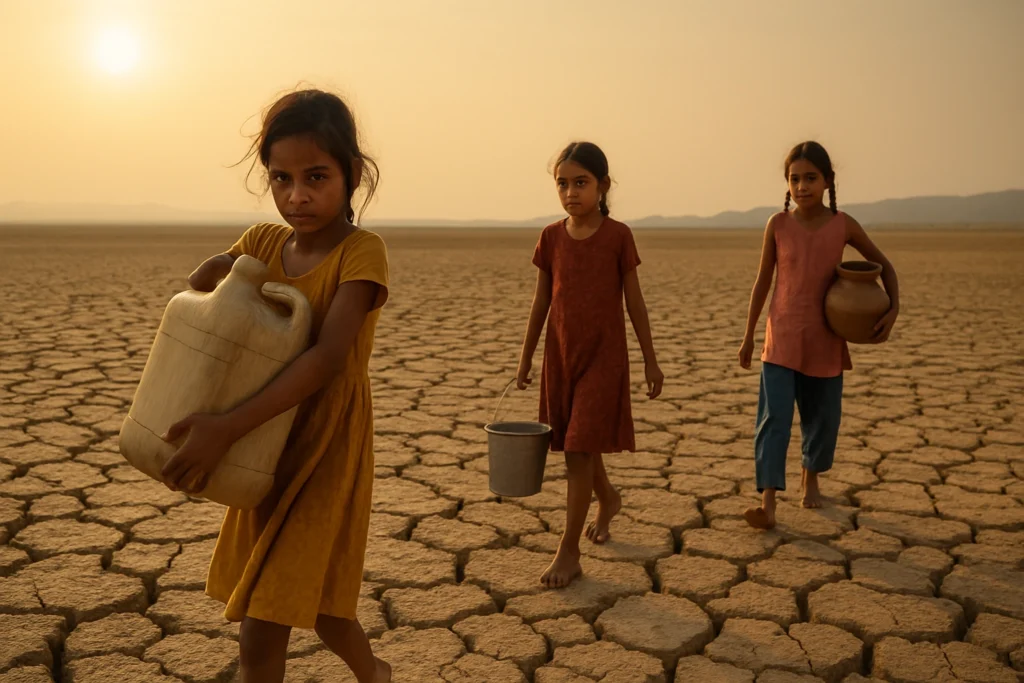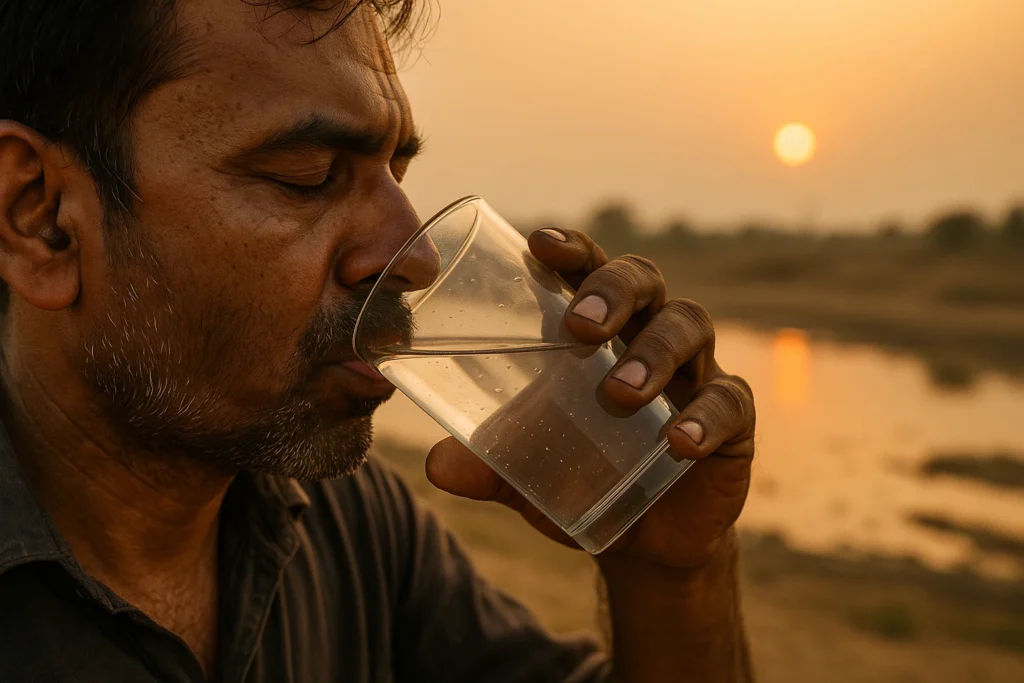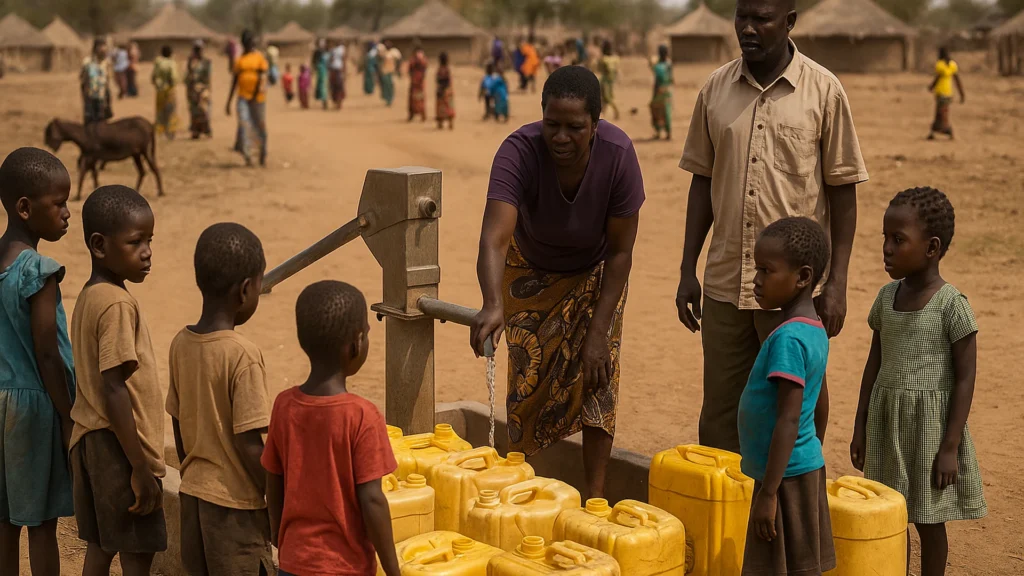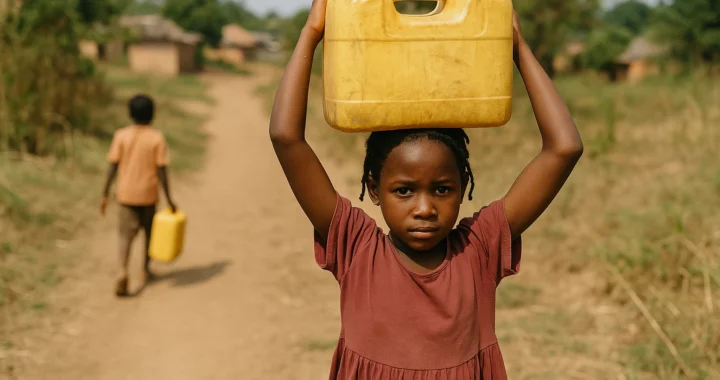If you’ve ever complained about a short walk to the corner shop, let’s picture a different reality. A child’s day starts at 4 AM, not for school or play, but to fetch water. Stories like these unfold millions of times each morning around the world.
The article will show you the real impact of water scarcity through children’s daily experiences. We’ll explore:
- Dangerous paths children face while seeking safe water sources
- Lost school hours that steal childhood dreams
- Health risks from contaminated river water
- Family struggles when water access fails
- Your role in creating sustainable solutions
Ready to walk alongside these brave young people? You’ll discover what their daily reality teaches us.
Dangerous Paths Children Walk for Water
Every morning, millions of kids face the same question: Will today’s water journey be safe? The answer is usually not encouraging.
Remote communities often have no choice but to send children on dangerous missions to fetch reliable water from distant sources. Come and explore the main threats these brave children face on every journey:
Wild Animals and Isolation Risks
Children face real threats from wildlife and predators during their solitary walks. What makes the situation worse is that many safe water sources are located in isolated areas where cries for help often go unheard.
The risk becomes even greater for young girls who are especially vulnerable to attacks while walking alone through remote terrain.
Physical Strain on Growing Bodies
Twenty-kilogram water containers are too heavy for small bodies meant for play, not hard labour. As the hours pass, the weight damages their spines while the constant walking wears down growing joints. The sad reality is that physical problems like these often become permanent disabilities from an early age.
Environmental Hazards
Flash floods can turn safe paths into death traps within minutes. At the same time, extreme heat causes dehydration during the very journeys meant to bring water home. To make matters worse, rocky terrain and unstable ground lead to injuries that remote communities can’t treat properly.
The physical dangers are serious, but they’re only part of the problem. What happens next affects these children in ways that last far longer than any bruise or cut.
Stolen Hours: How Water Scarcity Robs Childhoods

Imagine losing six hours of your day to one task. That’s exactly what happens to children in water-scarce areas who must walk to collect water. The routine swallows their entire morning and often their afternoon, too.
The math is heartbreaking when you break it down. If a child spends four to six hours daily fetching water, that adds up to 28 to 42 hours per week (As a mother, I would feel guilty for putting my child through such horrors). Put that in perspective, it’s longer than a typical adult’s work week.
The situation becomes even more tragic when you consider their education. While other kids their age sit in school learning to read and write, water collectors miss lessons they’ll never get back.
According to the UNESCO Institute for Statistics, 258 million children and youth remain out of school globally, with water collection being one of the barriers preventing access to education.
The loss of education creates a vicious cycle that’s hard to break. Without schooling, these children grow up without the skills needed for better-paying jobs. As a result, their own children will likely face the same water collection burden.
What should be childhood years filled with play, learning, and dreams, turns into a daily struggle just to survive.
The Hidden Health Crisis Behind Every Drop

The physical dangers of water collection are serious, but the water itself creates an even bigger problem. After risking their safety to collect water, children face another threat: the water might be making them sick.
- Immediate Disease Threats: River water carries deadly bacteria that cause severe diarrhea, cholera, and dysentery. And without quick medical treatment, waterborne illnesses can be fatal for young children whose bodies are already weakened.
- Invisible Long-Term Damage: Poor water and sanitation lead to chronic intestinal infections that prevent proper nutrient absorption. What makes this worse is that, unlike immediate sickness, stunted growth and developmental delays become permanent problems that follow children into adulthood.
- Sanitation Crisis: Open defecation near water sources pollutes the same rivers that families depend on for drinking. As a result, each collection trip increases disease transmission risk and creates cycles where contaminated water sources spread illness throughout communities.
- Economic Impact: Medical expenses from water-related illnesses drain family resources that could pay for school fees or nutrition. The problem compounds when healthcare costs consume household income, deepening poverty cycles that trap entire families.
Individual health problems like these don’t stay contained, though. They spread outward to affect entire communities in ways that might surprise you.
How the Water Crisis Affects Entire Communities

When children spend their days walking for access to safe water instead of attending school, entire villages feel the impact. The reason is simple: communities lose their future teachers, doctors, and leaders before they even have a chance to develop.
The ripple effects go far beyond individual families and touch every aspect of their environment. For example, local businesses struggle because educated workers aren’t available to help them grow. At the same time, healthcare becomes harder to access when no one has the training to provide basic medical services.
Agriculture suffers too, as traditional farming knowledge isn’t passed down properly when children miss school. The situation gets worse when women and girls bear the heaviest burden, often abandoning their own dreams to ensure families have access to safe water.
As a result, the community development that could lift everyone out of poverty stalls completely. Villages that should be progressing forward instead find themselves stuck in the same patterns year after year.
Breaking the cycle requires understanding that water access isn’t just about individual survival. Rather, it’s about giving entire communities the chance to build a sustainable future.
Your Role in Changing These Lives
Rather than food, it’s the water demand that keeps these communities awake at night. Basically, the water access stories shared here don’t have to end in struggle. The encouraging news is that real solutions are working in communities across the globe, and you can play an important role by helping expand their reach.
Easy510 partners with local communities in Australia and developing nations to create lasting change through sustainable water projects. When clean water becomes accessible, remarkable changes happen. Children start attending school regularly while families spend less money on medical bills, and whole communities can finally focus on growth rather than just surviving.
There are several ways you can make a real difference. For instance, financial support funds new water systems, sharing these stories helps raise awareness, or you could volunteer your professional skills to help Easy510 reach even more communities.
The future doesn’t have to repeat the same patterns of water scarcity and lost opportunities. By supporting organisations working on sustainable water solutions, you help write new chapters in these children’s stories.

